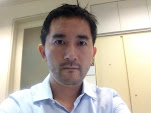Yesterday afternoon, I went to a movie theater near Orchard Road and watched the latest Japanese film Tokyo Taxi, starring Chieko Baisho and Takuya Kimura, directed by Yoji Yamada.
I used to go to the movies quite frequently when I first arrived in Singapore, like once a week, but the frequency of my cinema visits has decreased substantially over the years, no doubt affected by the prevalence of streaming services such as Netflix. The corona virus pandemic of 2020 also played a role in dampening my desire to watch a movie on the big screen.
That said, I’m really glad that I watched this movie in the theater. Tokyo Taxi—inspired by the 2022 French film Paris Taxi—is a story of an 85-year-old woman named Sumire, who moves into a nursing home located far to the south of Tokyo from her original residence in northeastern Tokyo. Instead of traveling by train, a much cheaper option, she decides to carry out the relocation by taxi.
It’s quite a long journey for a taxi ride to begin with, but Sumire requests Koji, the driver, to stop off at various spots in Tokyo that are full of bitter-sweet memories for her. While visiting those places, she recounts her life stories to him, including her first love, the man she later married, and what eventually happened to her beloved son.
As Sumire reveals her inner world, including the things she did she is not particularly proud of, Koji, who is a bit reserved at first, gradually opens up to her as well and tells her about his own anxieties. This is about as much as I can disclose about the movie while keeping this writing spoiler-free.
Chieko Baisho, the actress who plays Sumire, is currently 84 years old. She is famous for her role in the popular It’s Tough Being a Man (男はつらいよ) film series, which came out semiannually for more than a quarter century, known to practically anyone of my generation in Japan. Takuya Kimura, who plays Koji, is 53 as of this writing. He is an ex-member of SMAP, an erstwhile best-selling idol unit, arguably the most popular heartthrob to have emerged from the Japanese entertainment industry.
I thought both actors did a good job in the movie, but I particularly enjoyed the acting by Baisho, who portrayed the character of Sumire with refined skill, striking the audience with the subtleties and complexities of the protagonist without being overly saccharine and sentimental. We can’t help but fall in love with and cheer for Sumire, who manages to maintain a pure heart till the end despite the numerous adversities that befell her.
Kimura, on the other hand, is also likable in the film. He’s not just an idol with a handsome face performing sold-out concerts, but a serious actor as well, having played central roles in dozens of movies and television shows for more than three decades. I felt that in Tokyo Taxi he has achieved a breakthrough in acting by playing a character with more vulnerabilities than strengths, contrary to the heroic characters he had previously played. He will no doubt become more well-rounded as an actor as he continues to mature into an elderly man.
Kudos to the world-famous director Yoji Yamada for directing this heart-warming story. Tokyo Taxi has left an indelible impression on me, reminding me yet again that some movies are just meant to be viewed on the silver screen rather than via streaming. I sincerely hope that the seventh art can continue to survive and thrive in Japan and beyond, and for that, we need to support the industry by going to the movies from time to time.





